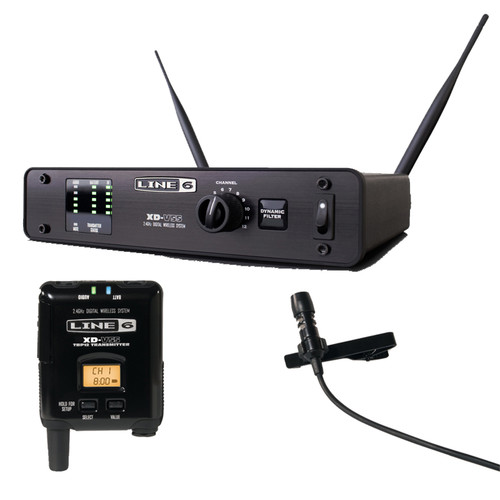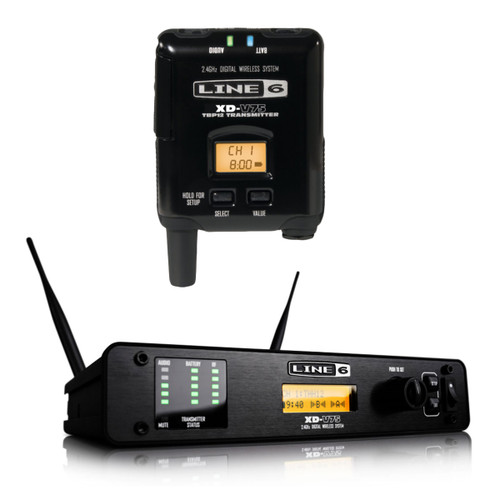- Frequency Band: 2.4GHz
- Simultaneous Channels: 12
- 3 EQ filter models for bodypack-based systems
- Range: 300 feet
- Dynamic Range: Up to >120dB
- Battery / Hours: 2 x AA / 8 Hours
- System Type: Headset System
Analog wireless systems use the FM radio band to transmit to the receiver. FM radio requires that the audio be compressed to avoid bumping into the channels on either side of the one you are transmitting on. Compression is achieved by reducing gain above a certain level, which has the effect of flattening out the audio. In other words, your sine waves become squared off. Noise is also introduced from the FM process, further reducing the signal-to-noise ratio. As the transmitter gets further from the receiver this noise increases causing noticeable hiss. So the recovered signal is squared off and has noise added to it. Digital wireless systems don't use compressors or expanders and the signal is binary, so it is not affected by noise. Line 6 has been in the digital wireless game far longer than any of our competition. Our promise to our customers is to provide the purest possible signal quality from input to output. Therefore we don't use any form of data compression to provide bandwidth for additional channels. After all, why would you want your digital signal to experience the kind of signal loss caused by MP3-style compression? Line 6 provides the cleanest and most accurate transmission path of any competitive product in its class.
Throughout its range, XD-V delivers consistent and dependable signal quality. Unlike analog systems, there’s no increased risk of interference or degradation in audio signal as you move further from the receiver. Perform with full confidence. Right up to the range limits of your XD-V system.
For vocalists, musicians, performers and active spoken word presenters who require hands-free operation, XD-V bodypack systems offer up to nine EQ filter settings that tailor the sound of your headset or lavalier mic. Mic placement is no longer a variable—on collar, chest or cheek, or even plugging an instrument into the transmitter—the custom EQ filter models help to optimize the system performance to the situation.










